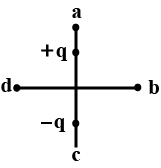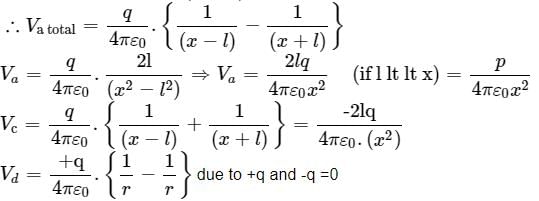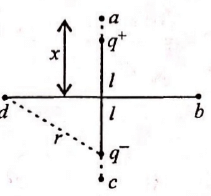CUET Exam > CUET Tests > Test: Potential due to an Electric Dipole (NCERT) - CUET MCQ
Test: Potential due to an Electric Dipole (NCERT) - CUET MCQ
Test Description
5 Questions MCQ Test - Test: Potential due to an Electric Dipole (NCERT)
Test: Potential due to an Electric Dipole (NCERT) for CUET 2025 is part of CUET preparation. The Test: Potential due to an Electric Dipole (NCERT) questions and answers have been prepared
according to the CUET exam syllabus.The Test: Potential due to an Electric Dipole (NCERT) MCQs are made for CUET 2025 Exam.
Find important definitions, questions, notes, meanings, examples, exercises, MCQs and online tests for Test: Potential due to an Electric Dipole (NCERT) below.
Solutions of Test: Potential due to an Electric Dipole (NCERT) questions in English are available as part of our course for CUET & Test: Potential due to an Electric Dipole (NCERT) solutions in
Hindi for CUET course.
Download more important topics, notes, lectures and mock test series for CUET Exam by signing up for free. Attempt Test: Potential due to an Electric Dipole (NCERT) | 5 questions in 5 minutes | Mock test for CUET preparation | Free important questions MCQ to study for CUET Exam | Download free PDF with solutions
Test: Potential due to an Electric Dipole (NCERT) - Question 1
The electric field and the potential of an electric dipole vary with distance r as
Detailed Solution for Test: Potential due to an Electric Dipole (NCERT) - Question 1
Test: Potential due to an Electric Dipole (NCERT) - Question 2
An electric dipole is placed at the centre of a hollow conducting sphere. Which of the following is correct?
Detailed Solution for Test: Potential due to an Electric Dipole (NCERT) - Question 2
Test: Potential due to an Electric Dipole (NCERT) - Question 3
Which of the following is not true?
Detailed Solution for Test: Potential due to an Electric Dipole (NCERT) - Question 3
Test: Potential due to an Electric Dipole (NCERT) - Question 4
The distance between H + and Cl − ions in HCl molecules is 1.38 Å. The potential due to this dipole at a distance of 10Å on the axis of dipole is
Detailed Solution for Test: Potential due to an Electric Dipole (NCERT) - Question 4
Test: Potential due to an Electric Dipole (NCERT) - Question 5
Four points a, b, c and d are set at equal distance from the centre of a dipole as shown in the figure.

The magnitudes of electrostatic potential Va, Vb, Vc and Vd would satisfy the following relation
Detailed Solution for Test: Potential due to an Electric Dipole (NCERT) - Question 5
Information about Test: Potential due to an Electric Dipole (NCERT) Page
In this test you can find the Exam questions for Test: Potential due to an Electric Dipole (NCERT) solved & explained in the simplest way possible.
Besides giving Questions and answers for Test: Potential due to an Electric Dipole (NCERT), EduRev gives you an ample number of Online tests for practice
Download as PDF



















